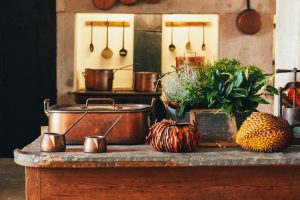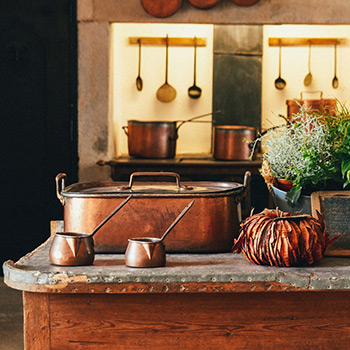Whether you know it or not, you probably own a number of items made from copper. One can be in your wallet, as most of the coins contain brass – alloy of zinc and copper. An average car contains almost a mile (!) of a copper wire, and the metal is also widely used in construction, wiring, plumbing, weatherproofing, and many more industries. What makes copper so versatile?
Characteristics of Copper
Beautiful, orange hue is gorgeous, but it’s not the only reason why copper has been so popular for ages. Copper is ductile: easily to stretch, mold and reshape. It conducts electricity and heat – it has second highest (after silver) thermal conductivity. Copper is also resistant to corrosion, and when exposed to corrosive surroundings it gets covered with green patina (copper sulfate or copper carbonate). The layer protects the metal from further corrosion. The green hue is the unmistakable feature of the U.S. Statue of Liberty – the sculpture made entirely of copper.

The U.S. Statue of Liberty is made of copper and weights 255 tons!
Metal that has changed the course of history
Without copper, human history would definitely look different. Our ancestors used this reddish-orange metal 10 thousand years ago to produce coins and adornments. The extraction of copper and alloying it with tin to produce bronze has marked the end of the Stone Age and beginning of the Bronze Age. Bronze was more durable and harder than other metals, which gave the societies using this alloy technological advantage. Moreover, trading bronze developed early urban civilizations. The exceptional alloying properties of copper made it the material used for millennia.
Excellent alloy – millions of applications
Copper is great at making friends. Depending on desired features, can be mixed with tin (forming bronze), zinc (brass) or nickel. Because of these alloying abilities, copper is used in a number of industries: construction, power generation and transmission, production of electronic goods, industrial machinery and vehicles. From motors to microprocessors, from radiators to doorknobs – there are millions of possible applications of copper – solo or in alloys.
Here are some popular alloys with copper:
- Bronze – material that marked the downturn of the Stone Age, contains 88-95% copper by weight.
- Aluminium bronze – with greater corrosion resistance and strength, is also resilient to sea water and… marine organisms (they are not a fan of copper!). That’s why aluminum bronze is perfect for marine applications. It usually contains 74-95% copper by weight.
- Brass – with 50-90% copper by weight, brass is a bright, gold-like alloy. It’s material of choice for millions of applications: musical instruments, ammunition casing, plumbing, locks, electrical applications and many more.
- Cupronickel: silver in colour, can be found in coins, marine applications (from shipbuilding to steam turbine condensers) and cutlery – it is common basic material for silver-covered tableware. You probably wear cupronickel right now if you have anything with zipper on you.
- Nickel silver: with 60% of Cupper by weight, is often used in jewelry design and production of musical instruments.
- Beryllium copper – 95,5 – 97% – small amount of beryllium changed copper into extremaly strong, non-sparkling materials, excellent to use in metalworking. Beryllium dust or mist is toxic, but finished
- beryllium copper objects are safe to use.

Popular alloys of copper.
Copper in interior design and decor
We know now copper has great properties, but we cannot ignore the fact that it looks just stunning. Warm hue of copper fits not only industrial, but also rustic of eclectic interiors. One of the hottest trends for 2018 are copper kitchen surfaces, such as countertops – easy to made with our copper sheet plate which we can cut to size. Weathered copper ages well and can be used for sink fittings and water works. Another reason to use copper in the kitchen is its ability to destroy a wide range of bacteria and fungi – so it’s a safe and hygienic material.
While large surfaces covered with copper sheet plate definitely make a statement, copper also looks enchanting on smaller pieces. Coffee tables, lamps, wired baskets, vases or mirror frames give elegant touch to every interior. Copper pairs lovely with marble, wood and soft textiles. It can also brighten up a bathroom – in towel rails or exposed pipes.

Copper elements looks amazing in rustic, vintage kitchen. Fot. Ramiro Mendes / Unsplash

EPM Museum in Seattle – example of using different alloys of copper and other metals in modern architecture. Fot. Scott Webb / Unsplash.
Where to buy copper sheet plates?
Are you ready to make a statement with copper-covered surface or need copper sheet for industry? We are based in the Newcastle upon Tyne area and supply sheet metals to clients all over the UK. There is no minimal order, and we cut to size, supplying just the right amount for our customers. Check our copper sheet plate in a range of thickness here.

